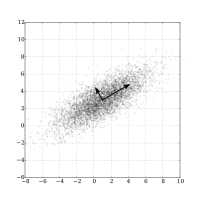
Photo from wikipedia
Broadly, species of arthropods infesting livestock are grouped into flies (biting and non-biting), fleas, lice (biting and sucking), ticks (soft and hard), and mites (burrowing, non-burrowing, and follicular). Among which,… Click to show full abstract
Broadly, species of arthropods infesting livestock are grouped into flies (biting and non-biting), fleas, lice (biting and sucking), ticks (soft and hard), and mites (burrowing, non-burrowing, and follicular). Among which, biting and non-biting flies and ticks are the potent vectors for many bacterial, viral, rickettsial, and protozoan diseases. Vectors of livestock are having economic significance on three points (1) direct losses from their bite and annoyance, worries, and psychological disturbances produced during the act of biting and feeding, (2) diseases they transmit, and (3) expenditure incurred for their control. Flies such as Culicoides spp. and Musca spp. and various species of hard ticks play important role in disease transmission in addition to their direct effects. For control of vectors, recent concept of integrated pest management (IPM) provides the best solution and also addresses the problems related to acaricide resistance and environmental protection from hazardous chemicals. However, to successfully implement the concept of IPM, for each vector species, estimation of two monitory benchmarks, i.e., economic injury level (EIL) and economic threshold level (ETL) is essential prerequisite. For many vector species and under several circumstances, estimation of EIL and ETL appears to be difficult. Under such scenario, although may not be exact, an approximate estimate can be accrued by taking into account several criteria such as percent prevalence of vectors in a geographical area, percent losses produced, total livestock population, and current prices of livestock products such as milk, meat, and wool. Method for approximate estimation is first time described and elaborated in the present review article.
Journal Title: Veterinary World
Year Published: 2018
Link to full text (if available)
Share on Social Media: Sign Up to like & get
recommendations!